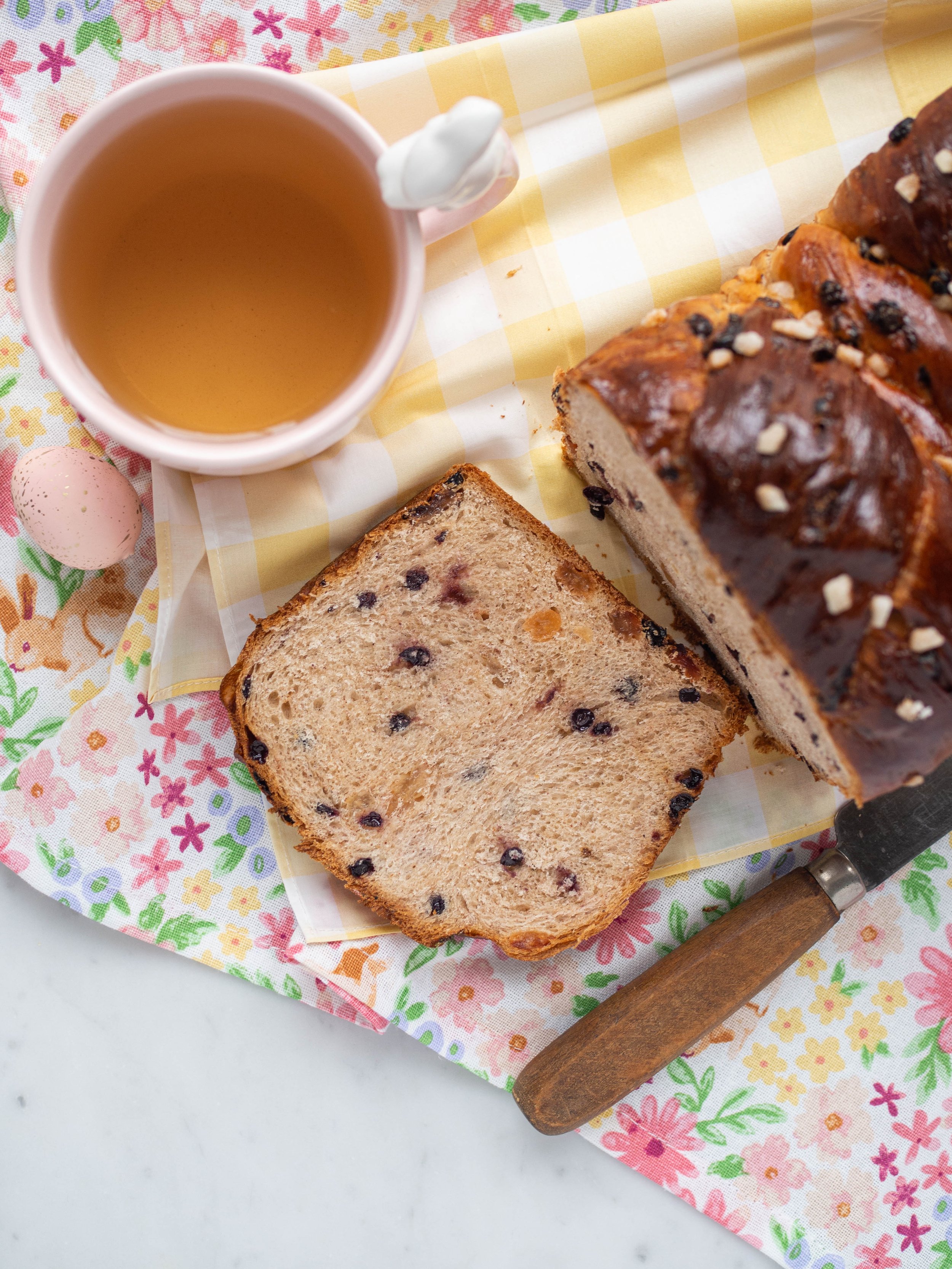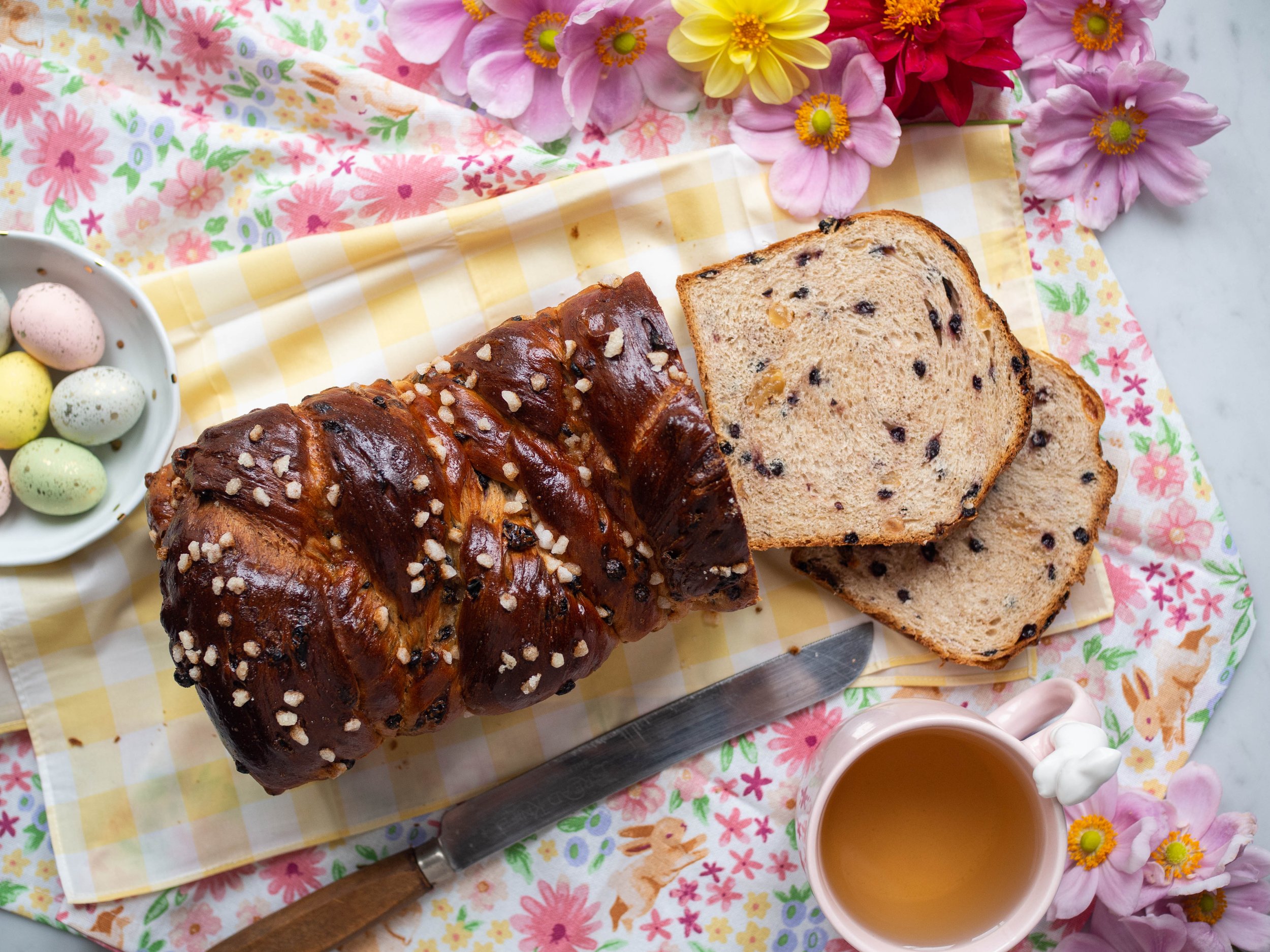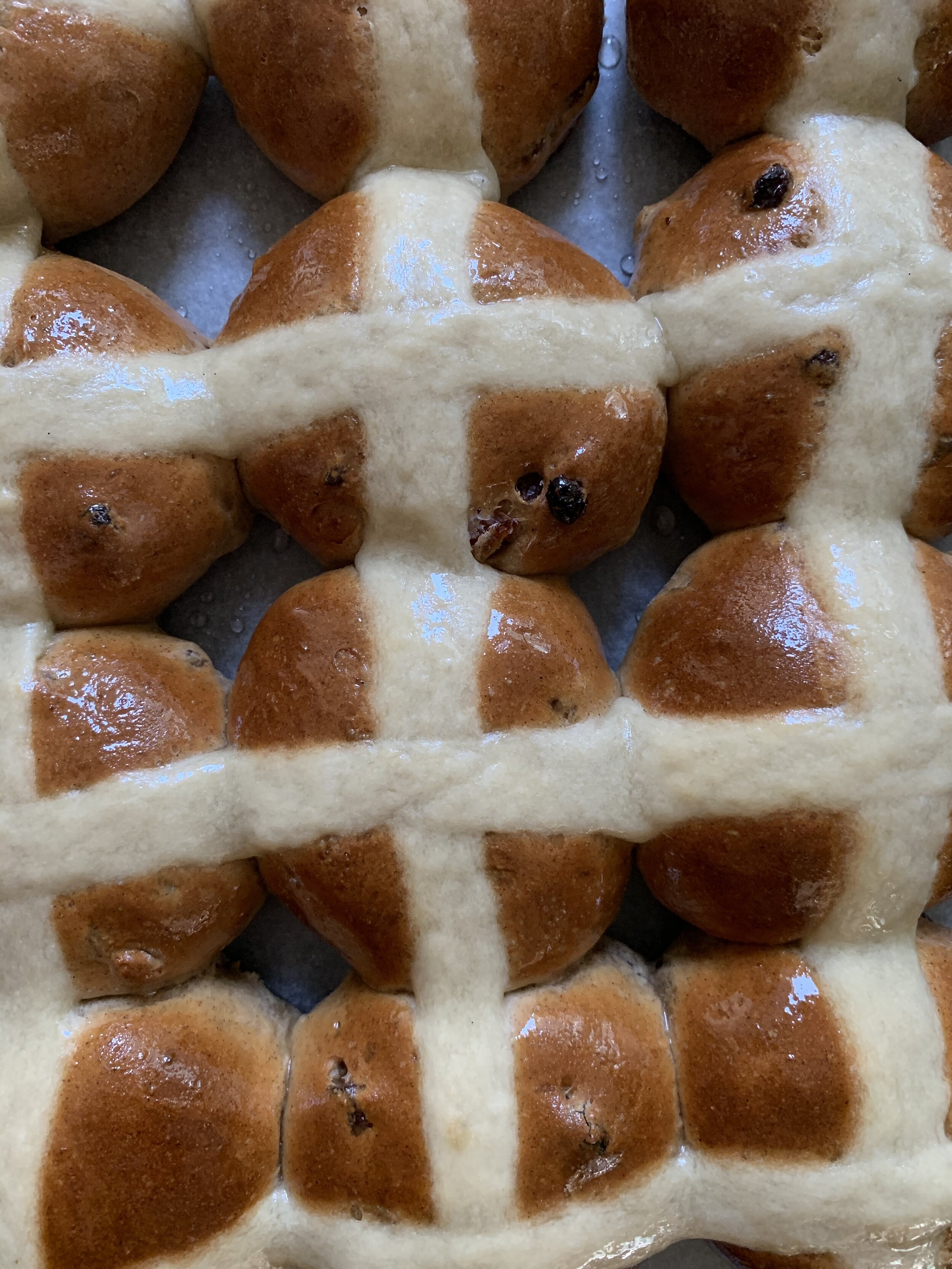This recipe is great for those who can’t eat or don’t like dried fruit, it is also lactose free so it’s a great alternative if you need a more intolerance/allergy friendly hot cross bun recipe.
Freeze the leftovers as these are otherwise best eaten the day they are made.
Fruitless Hot Cross Buns
Ingredients:
250ml warm/tepid water
85g golden caster sugar
9g dried yeast
490g plain flour, plus extra
2 tsp ground cinnamon
1 tsp ground ginger
1 tsp ground cardamom
1/2 tsp ground nutmeg
1/2 tsp mixed spice
3/4 tsp salt
2 eggs
63ml canola, vegetable or sunflower oil, plus extra
1 tsp vanilla extract
Ingredients for the Cross:
90g plain flour
8g icing sugar (confectioners)
pinch of salt
15ml canola or vegetable oil
75ml water (room temperature/tepid is best)
Method:
Mix together the warm water and 60g of the sugar. Leave for 10-15 minutes, or until the yeast has become foamy. If the yeast doesn’t foam, discard and start again. The yeast may be out of date or the water too hot which will kill the yeast rather than activate it.
Place the flour, salt, spices and remaining sugar into a large bowl (one that fits your stand mixer if you have one), and mix together.
In a jug, whisk together one of the eggs with the oil and the vanilla extract.
Once the yeast is foamy, add to the flour mixture, along with the egg and oil mixture. Mix together with a wooden spoon until a rough dough forms.
Then attach the bowl to your stand mixer fitted with the dough hook, and knead on a medium speed for about five minutes. The dough will be smooth and a little sticky once done. If the dough is too sticky, add a little more flour (1-2 tbsp).
While the dough is kneading, lightly oil a large bowl.
Place the dough into the oiled bowl and cover. Leave in a warm spot for 1.5 hours, or until the dough has risen and doubled in size.
Line a large baking tray with baking paper.
Once the dough has risen, very lightly flour your work surface and tip the dough out. Divide the dough into 12 pieces - you can do this by weighing the dough, dividing the total weight by 12, then weighing each piece of dough out so you get even sized buns.
Roll each piece of dough into a bun shape by folding the sides of each piece to the centre and pinch to close. This will now be the underside of your bun. Place the pinched side down, and cover your hand over the ball of dough like a loose claw. Rotate the ball of dough under your hand using the claw shape, to gently smooth the dough and form into a nice ball shape.
Place each ball of dough on the prepared tray, in a 4 x 3 formation. I usually leave a little space in between each to allow for more rising during the final proof and during baking.
Cover the dough again and leave in a warm spot for about 30 minutes, or until the dough has risen.
While the dough is rising, preheat oven to 180 degrees Celsius.
If using, make the cross paste by whisking together all the ingredients in a medium bowl until it is a smooth yet paste like consistency. If the paste seems too thick, add a little more water.
Place the paste in a piping bag or zip lock bag and twist the top to close.
Once the dough has risen, cut a small amount of the piping bag tip off and pipe the cross over each bun. Do this by piping one long line over each row of buns, then finish it off doing the same in the other direction. Whisk the remaining egg, and gently brush the buns with some egg wash (focusing more on the buns than the cross).
Bake for 20-25 minutes, rotating the tray in the oven about half way to help the buns cook and brown more evenly. The buns will be ready when they are golden on top and sound hollow when tapped.
Remove from the oven, and place the tray on a wire rack. Allow the buns to cool a little, before sliding the buns off the tray onto the wire rack using the paper they are sitting on. If you leave the buns on the tray too long, they may get a little wet underneath from the steam.
Serve warm. Can be frozen.
Serves 12.
































